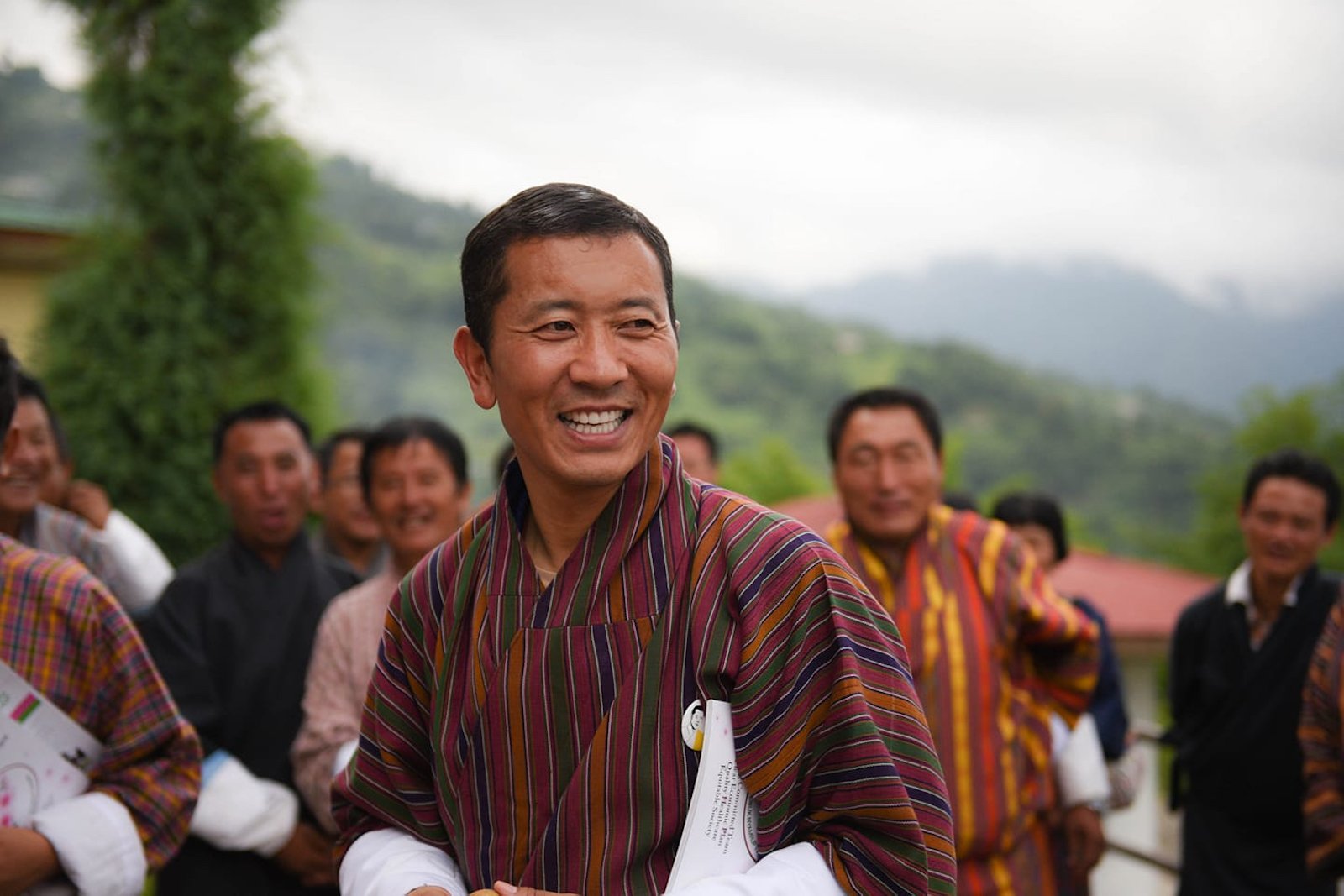
China Eyes Cracks in a Strategic Indian Partnership
During Bhutan’s Prime Minister Lotay Tshering’s December visit to New Delhi, India Prime Minister Narendra Modi said, “Development of hydroelectric projects is an important part of the long history of India’s aid to Bhutan.” While hydropower has bolstered Bhutan’s economy, it has failed to combat Bhutan’s major economic concern: unemployment. However, China, India’s geopolitical rival, is eager to alleviate such worries, albeit with ulterior motives. If the India-Bhutan economic relationship is hydropower-centric, Bhutan may welcome China’s economic development overtures and subsequent strategic territorial demands.
Beginning with the 1949 Treaty of Friendship, the “all-weather” partnership between the subcontinent giant and the geostrategic Himalayan kingdom was critical for both parties: India is Bhutan’s largest aid donor; Bhutan respects India’s concerns about China. Since 1961, India’s aid has centered on financing Bhutanese hydroelectric projects that sell electricity back to India. Representing 25 percent of Bhutan’s GDP and three-fourths of its total electricity generation, Bhutanese electricity exports to energy-hungry India have fueled Bhutan into one of the fastest growing Asian economies. Nevertheless, hydropower has been unable to solve Bhutan’s unemployment problem.
Unemployment in Thimphu, Bhutan’s capital, rose from 5.4 percent in 2005 to 6 percent in 2017, and total youth unemployment of 10.6 percent presently outsizes the national average of 2.4 percent. “[Hydropower] has not been able to solve the unemployment issue, which is our immediate concern,” said Tandi Dorji, foreign minister of the now ruling Druk Nyamrup Tshogpa (DNT) party in a Nikkei Asian Review article. “The [hydropower] sector has been able to employ only 2 percent of the Bhutanese workforce.”
Still, India has unceasingly emphasized hydropower: three major hydroelectric projects are under construction; India and Bhutan signed an agreement in 2014 to build four more hydroelectric projects, and discussions are underway to develop a mega hydroelectric project.
To increase employment, Tshering and the DNT aim to expand Bhutan’s economic relations beyond India-Bhutan hydropower cooperation. “It would be unwise to hinge the country’s economy solely on a single sector,” states the DNT’s Narrowing the Gap manifesto. With Bhutan’s diversification objectives, a single-minded Indo-Bhutanese economic relationship may allow India’s geostrategic rival to fill the economic void.
By fulfilling economic development requests, largely infrastructure, in Bangladesh, Maldives, Nepal, Pakistan, and Sri Lanka, China has obtained strategic footholds in India’s sphere of influence. Now, Bhutan, India’s only steadfast neighbor and China’s sole neighbor with whom it does not have formal diplomatic relations, is China’s target. Though Thimphu remains wary of upsetting New Delhi, Bhutan’s leaders have voiced growing interest in China’s economy, GDP nearly five times larger than India’s GDP, substantial Belt and Road Initiative (BRI) financing, and resolution of the perennial Sino-Bhutanese border dispute.
“Our relations with China, the second largest economy in the world and an emerging global power is increasing and we continue to maintain peaceful and cordial relations,” said then Bhutan Prime Minister Tshering Togbay in his June 2018 parliament speech. In addition to China’s economy, its BRI, an ambitious regional and global connectivity plan steeped in infrastructure development, has also caught the attention of Bhutan’s political leadership.
In July 2018, China’s Vice Foreign Minister Kong Xuanyou discussed the BRI with King Jigme Singye Wangchuk and Tobgay in Thimphu. “The Bhutanese side welcomes the positive outcomes of the Belt and Road Initiative…[Bhutan] is committed to deepening exchanges and cooperation with China…,” China’s Ministry of Foreign Affairs (MFA) quoted Bhutan’s leaders in a statement following the visit. As China’s economy and Beijing’s development proposals gain favor in Thimphu, resolution to their long-standing territorial dispute may also be forthcoming.
During Kong’s visit, the two sides discussed Doklam – contested Bhutan-occupied territory near the India-Bhutan-China tri-junction border where the Indian army and People’s Liberation Army have faced off. Control of the Doklam Plateau enables strategic primacy over the Siliguri Corridor, also known as India’s “Chicken’s Neck,” which connects the majority of India to its isolated northeastern states. China previously offered Bhutan 495 square kilometers in exchange for 269 square kilometers of territory in Doklam, but Bhutan has denied its offers through 24 rounds of talks. Notwithstanding Bhutan’s past consideration of India’s strategic interests and their “special relationship,” prospective Chinese development assistance has a proven track record of affecting robust partnerships and influencing territorial concessions.
The Philippines, a historic U.S. treaty ally and formerly ardent defender of its South China Sea territorial claims, conceded disputed territory to China after the latter committed capital to the Philippines. Manila-based analyst and academic, Richard Heydarian, indicated to NPR that China was possibly “dangling those [financial] incentives to lure the Philippines into geopolitical concessions.” Similarly, while the 2007 India-Bhutan Friendship Treaty requires India and Bhutan to “cooperate closely with each other on issues relating to their national interests,” potential Chinese development assistance may entice Bhutan to consider border concessions with its economic interests, not India’s national interests, in mind.
India-Bhutan hydropower cooperation has economically strengthened Bhutan, but its inability to relieve Bhutanese unemployment has led Thimphu to seek economic diversification. If New Delhi fails to augment hydropower cooperation, China’s economic-tipped wedge may widen the crack in the India-Bhutan partnership. Such a fissure may provide Beijing space to negotiate favorable territorial concessions and supply yet another strategic Chinese foothold on India’s doorstep.

